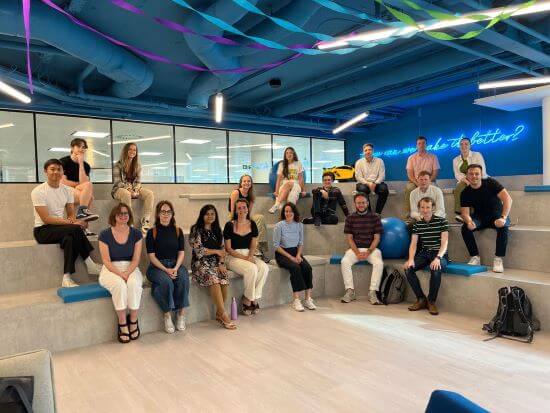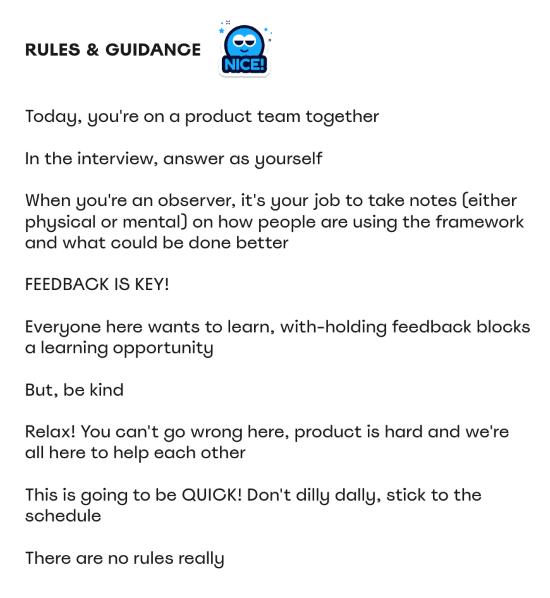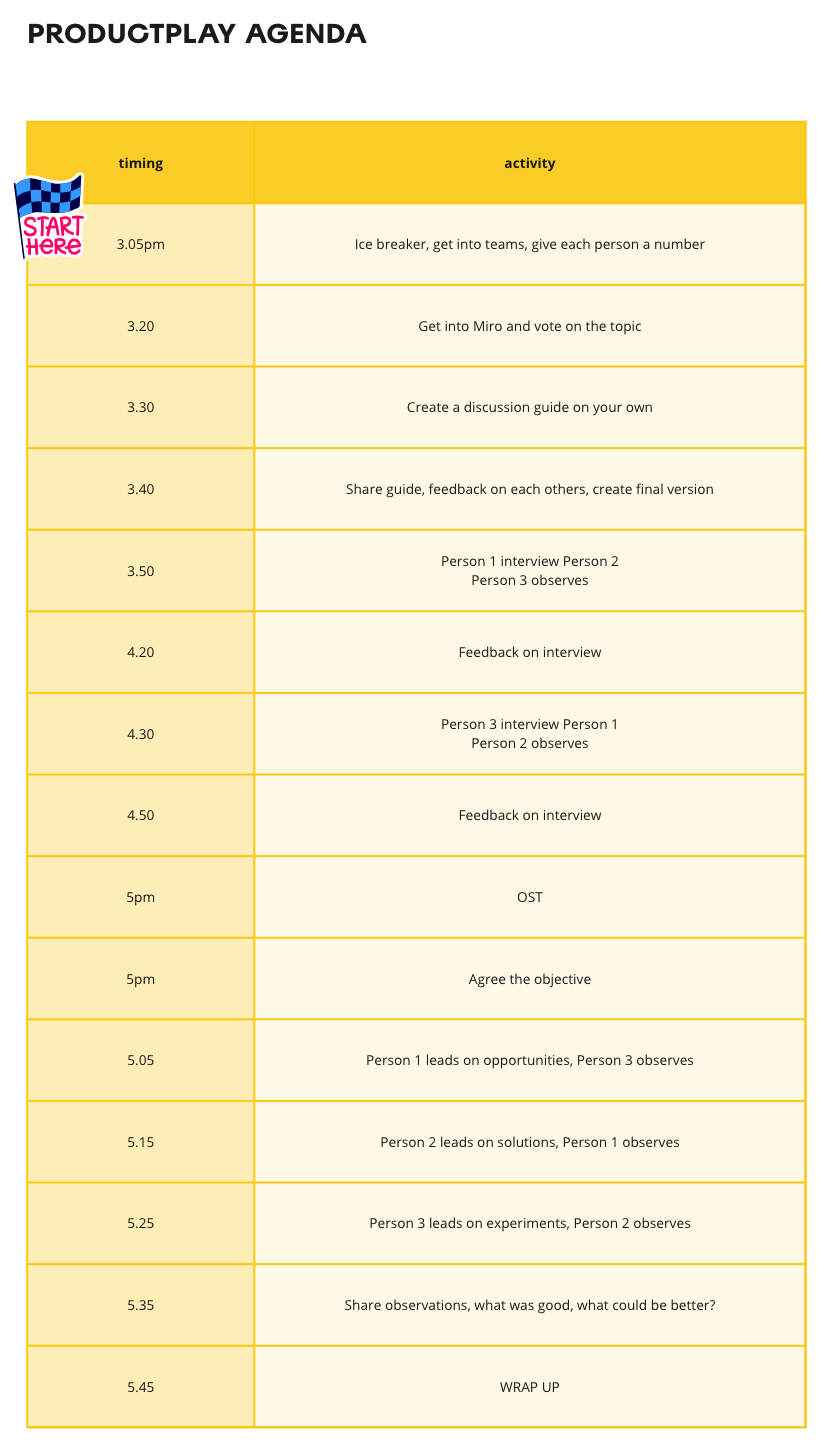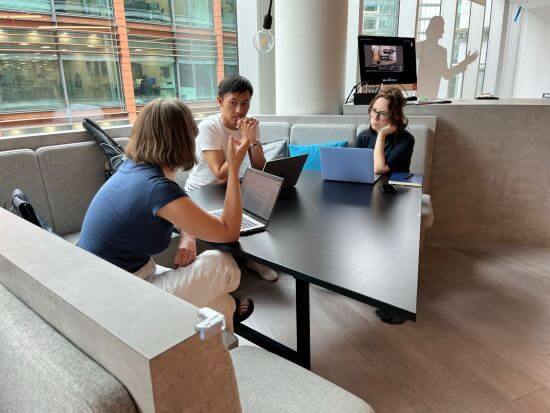Read more
How often have you read a book or article and been inspired to take action on it? And how often have you actually taken action on it? Chances are there’s a big gap between how inspired you feel and which concrete actions you end up taking.
If that’s the case for you, you’re not alone. Reading a book is (relatively) easy. Changing our behavior is much harder.
Reading a book is (relatively) easy. Changing our behavior is much harder. – Tweet This
This is why we created the Product in Practice series here on Product Talk (and why Teresa designed the Product Talk Academy courses and the CDH community the way she did). We want to help you see how real product people and teams are taking steps to apply continuous discovery. The more you see how others are doing it, the more you can be motivated to take a few of these steps yourself. Well, that’s our hope, anyway.
And if you’ve been thinking about taking action for a while but unsure about how to get started, we hope today’s Product in Practice will be the gentle push you need.
We were thrilled when we heard Lily Smith’s talk at Product at Heart. While Lily had no shortage of product inspiration and knowledge, she realized that one element that was missing was deliberate practice, so she set out to change that. Her early experiments on her own and with the product team at BBC Maestro had some promising results and show how easy it can be to get started with building your product skills.
Do you have a Product in Practice story you’d like to share? You can submit yours here.
Meet the Continuous Discovery Champion, Lily Smith
Lily Smith is the Chief Product Officer at BBC Maestro, an independent, VC-backed startup with a close relationship with BBC Studios. Through high-quality, long-form video content, they provide people with access to the teachings of some of the best-known and experienced professionals in creative and wellness topic areas.
In her role as Chief Product Officer, Lily looks after Product, Design, Research, and Data within the business. Lily says her team’s purpose is to provide both business and customer value with a strong focus on growth. “We have to ensure that the content we create is presented well and consumed easily and that this helps our customers achieve their goals.”

As CPO at BBC Maestro, Lily gathered a large group of product people to participate in the inaugural ProductPlay sessions.
In addition to her day job, Lily co-hosts The Product Experience podcast and founded the Bristol chapters of ProductTank and ProductCamp. Describing her commitment to learning and practice, Lily says, “I’m an avid supporter of product communities in general and always looking for ways to improve my own knowledge and skills.”
Lily’s Challenge: It’s Hard to Find Places to Actually “Practice” Product Skills
It’s clear from her resume that learning is important to Lily. But over time, she came to a realization: She wanted to do more than just learn on her own. Here’s how Lily describes it: “In my 15 years in tech companies, I’ve done lots of self-directed learning. I love going to talks and hearing stories and advice from peers, reading books and articles and generally absorbing as much as I can. However, I always felt that there’s been something missing—a place to actually practice some of the things I was learning.”
Because Lily’s work experience was mostly on small product teams, she didn’t have a lot of opportunities to learn from her peers at work. She explains, “Having worked mostly in startups, I’ve been the sole product person in most companies. I don’t have the benefit of learning from other product people in a big team. I think there are a lot of other people in this situation.”
I’ve been the sole product person in most companies. I don’t have the benefit of learning from other product people in a big team. I think there are a lot of other people in this situation. – Tweet This
The first time Lily became aware of this was when she learned about design sprints. “It sounded amazing, but taking a whole team out of their normal routine for a week without really knowing what the outcome would be was pretty terrifying,” says Lily. “I needed to gain some confidence in the activities and in the process before trying it for real.”
Luckily, Lily had a friend, Nick Forsberg, who was interested in experimenting with her. Lily and Nick decided to condense the design sprint (which is usually conducted over a five-day workweek) into a single day. “The practice run was so helpful, and at the end of the day we concluded the sprint and felt more confident about the framework. But it would have been even better to have done this multiple times,” says Lily.
The success of this first experiment stuck with Lily and she had been wondering how to help others experience the benefits of practice firsthand. She explains, “Fast forward a few years and product practice was still very much on my mind. I really wanted to try and run some new types of events with product people where we work together instead of just chatting and sharing.”
When Petra Wille invited Lily to speak at Product at Heart on the topic of getting better at product management, it was just the push Lily needed. “I used this as a catalyst to start trialing these events,” says Lily. “I call them ProductPlay.”
Lily’s Answer: ProductPlay Sessions to Practice Interviewing and Opportunity Mapping
For the inaugural ProductPlay session, Lily chose to cover Jobs To Be Done (JTBD) interviews and opportunity solution trees as the two frameworks to practice. “The reason I chose these is because my team and I were doing lots of interviews but I felt that we could be better at digging deeper into the ‘why’ behind people’s attitudes and behaviors,” says Lily. “Including opportunity solution trees meant that we could really see the value of understanding the why and how we can turn that into action.”
Lily came up with some rules and guidance (pictured below) to help the team understand what to expect and get the most out of the experience. These included things like, “Everyone here wants to learn. Withholding feedback blocks a learning opportunity” and “Relax! You can’t go wrong here, product is hard and we’re all here to help each other.”

Lily tried to keep the rules and guidance for ProductPlay simple—the goal was just to learn together.
For the first session, Lily scheduled a block of one and a half hours (which in retrospect she says was quite ambitious to squeeze everything into) and planned the agenda to include time for an ice-breaker, voting on a topic, dividing into small groups, creating interview guides, and conducting interviews.
After the team chose the topic of “reducing plastic waste in the home,” they interviewed Lily. They took it in turns to ask questions and observe each other. At the end of the interview, they all gave feedback to each other. “Being the interviewee, I was able to shed some light on other information they missed out on because of their question style and direction. We all learned a lot,” says Lily.

Lily says trying to fit everything into one 90-minute session turned out to be quite ambitious. Click the image to see a larger version.
After everyone had practiced interviewing, they focused on the goal of helping people reduce plastic waste in the home and mapped some of the opportunities, solutions, and experiments from the single interview. “We learned loads in this process, too,” says Lily. “The session was a lot more successful than I imagined it would be. The team really valued the intentional feedback.”
Because the first session had been a success, Lily decided to run the same agenda again for a larger group—and with people who didn’t know each other. “This was a bit trickier,” admits Lily.
“Running the same process in a larger group—with just a small amount of context setting—had a few more challenges. One of the teams ended up being quite a junior group so they didn’t have anyone who had much firsthand experience of interviewing or opportunity solution trees.”

For the second ProductPlay session, Lily organized a larger group of people who didn’t all know each other already.
There was also some confusion over including JTBD in the interviewing or trying to uncover the ‘jobs’ that the customer needs to achieve within the topic. “The majority of the attendees had little experience with JTBD, apart from one participant who was more purist about its application and wanted to do some job-mapping exercises before doing the interview,” says Lily. “For everyone it was an exercise in ‘letting go’ of perfectionism and fear of getting it wrong (myself included, in terms of running the event!).”
For everyone, ProductPlay was an exercise in ‘letting go’ of perfectionism and fear of getting it wrong (myself included, in terms of running the event!). – Tweet This

Breaking into small groups gave everyone a chance to play multiple roles and give feedback to others.
Key Learnings and Takeaways
At the end of the session, Lily asked everyone to provide some feedback, including how it could be more successful, as well as their key takeaway. “One of the things that came back from a couple of people was that they felt they needed some training at the beginning of the session. I had sent some links to JTBD and OST resources prior to the session and explained the session wouldn’t include training, it was pure practice, so it was interesting that this had been raised,” says Lily.
Reflecting on this feedback, she adds, “I think it validated for me that reading about a framework and tool and practicing it are really different, and having someone walk you through that first time is so helpful. This feedback just validated for me that an event like ProductPlay is really needed by others, too, so that product people can help each other through this and learn from each other outside of their product team.”
Reading about a framework and tool and practicing it are really different, and having someone walk you through that first time is so helpful. – Tweet This
One surprise for Lily was the group’s relative familiarity with opportunity solution trees as opposed to the JTBD framework. “JTBD has been around for a lot longer, but there was a lot more familiarity and use of OST in the groups’ day-to-day work,” notes Lily.
These initial experiences have given Lily confidence to continue pursuing the ProductPlay format. “I plan on running more events with the same group—we all agreed we wanted to do it again now that everyone is more confident with the format and the playfulness of the practice,” she says. Lily is also hoping to expand the practice to other groups and build a library of resources so people can set up and run their own ProductPlay sessions.
Ultimately, Lily sees the chance to expand ProductPlay to a much broader audience. “Like any good product person, I have a vision for ProductPlay—I’d love for it to be a movement of self-organized practice sweeping across the international product community,” Lily says, “There’s nothing more heart-warming than creating a culture of learning and support—to expand that influence beyond my immediate team and community would leave me a very happy woman.”
I’d love for ProductPlay to be a movement of self-organized practice sweeping across the international product community. – Tweet This
If you’re excited about the idea of deliberate practice but not quite ready to set up your own ProductPlay session, come join us in a Product Talk Deep Dive course. These sessions are designed to help you practice skills like interviewing and opportunity mapping in an open, low-stakes setting. We’d love to see you there!
The post Product in Practice: Creating Opportunities for Deliberate Practice at BBC Maestro appeared first on Product Talk.
Product in Practice: Creating Opportunities for Deliberate Practice at BBC Maestro was first posted on December 27, 2023 at 6:00 am.
©2022 "Product Talk". Use of this feed is for personal non-commercial use only. If you are not reading this article in your feed reader, then the site is guilty of copyright infringement. Please let us know at support@producttalk.org.
from Product Talk https://ift.tt/4RPl0OL
via IFTTT



